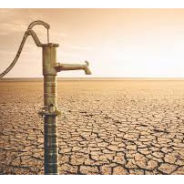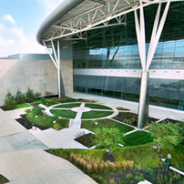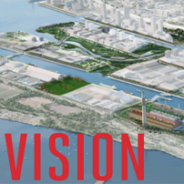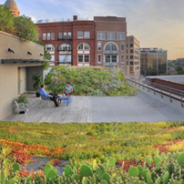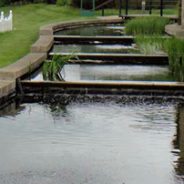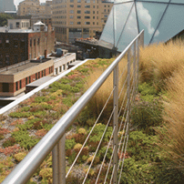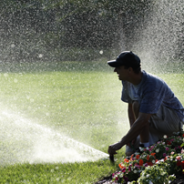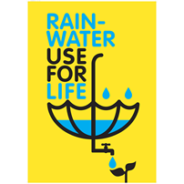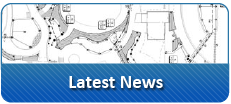What you going to do when the well runs dry?
Designs that work When thinking about your landscape designs are you taking into account the irrigation design and how it may impact the future of our water supplies? Consider the impact Water keeps our planet alive. Where there’s water, there’s life. Our water is our life. Every drop that we live in, on or around must sustain a clean pure consistency for all life on earth to survive. If this water is contaminated, then we all cease to exist. The power that water has over us is immense. We as humans take it for granted until sometimes it is too late. Seventy-five percent of our earth is covered with water and the magnitude of these massive bodies is profound. We are able to send men to the moon and rockets to Mars and beyond and yet we find it difficult to explore ocean depths below two miles down. The incredible density of it makes it almost impossible. Recently science has invented specialized machinery to explore the depths of the ocean floor and have discovered incredible unexplainable life in these depths. The fact that any life can survive in such a compressed atmosphere is in such a diverse contrast to life above water. Even though we know so very little of how it thrives, we do know of one certain fact; “Life above and below water is in a fragile balance by virtue of personal and corporate responsibility”. Design responsibly Every landscape or irrigation professional carries a moral and ethical responsibility to protect not only the quality of water, but to design and install systems that are as efficient as possible with today’s product offerings. If you are not aware of the many water saving technologies currently available in the market then I encourage you to contact the team at Landtech Design and work with them to develop a design to incorporate water conservation utilizing water efficient sprayheads, weather based controllers, weather stations and many other water saving features. Beyond the design I believe also we are charged with the responsibility of educating our customers as to the most efficient way to us these systems we install. If the customer is not comfortable with it, then offer a service that takes this responsibility and worry off their shoulders. Manufactures engineer and build great products that have little chance of succeeding without the help of a professional irrigation designer and contractor who has a vision well into the future. Don’t be the one to “Let your well run dry”. That’s the View From Here…. David...
read moreRecap of 2017 Projects…A year of successes
Busy year at Landtech Design As we look back over the past year we realize that there have been a variety of projects that we’ve been involved in and wanted to share to you the many successes. If you are looking to explore irrigation design consultants for 2018 we encourage to see what relevant projects you can compare to for your consideration going forward. We look forward to working with many of you this year! Projects that stood out The key to working with our team is the ability to work across all levels or disciplines from architects to civil engineers and develop a comprehensive design incorporating the best in technology and water conservation. Here are a few examples that stood out as ones we completed and designed in 2017. Cummins Distribution Headquarters (Indianapolis, Indiana) Design Team: Deborah Berke Partners; Land Collective; CEC Engineers PepsiCo Research & Development Campus (Valhalla, New York) Design Team: Flad Architects; WSP Engineering; JMC Site Development Central Fields Rugby & Soccer Complex at Forest Park (St. Louis, Missouri) Design Team: SWT Design; Ross & Baruzzini City-Arch-River / Jefferson National Expansion Museum (St. Louis, Missouri) Design Team: MVVA, Dave Mason Associates, KJWW, Olsson Associates Landtech Design’s Role Since opening our doors in 1994, Landtech Design has prepared irrigation design documents on over 3,000 projects throughout the world. Nearly 98% of our projects are performed with Landtech Design serving as a Subconsultant to a landscape architectural office, or an architectural firm with an LA section. Specifically with the Cummins Distribution Headquarters their design team brought in our team to be involved with the water-harvesting aspects of the project and design of the pump-station and filtration. There were expansive irrigation needs on several plazas, two greenroofs, streetscape, native grass establishment and the incorporation of a weather-based controller for ongoing operations. This design was developed and approved as a LEED Gold project. Landtech Design has vast experience with LEED projects and we pride ourselves in knowing the latest technology advancements in irrigation. For a further listing of projects that we’ve been involved with we encourage you to request a downloadable file that will not only describe the many projects, but also provide scope details and cost estimates for the irrigation on that specific project. Learn more…...
read moreFrom past to future in Toronto
Future of this City… Landtech part of this exciting redevelopment in Toronto Landtech Design is excited to be a part of a major redevelopment project in conjunction with the City of Toronto. As the architects and landscape architects work to take these ideas from concept to reality our team will be involved in the irrigation design to ensure the latest in technology and water efficiency is incorporated for the successful greening of these discarded industrial sites. It’s the next great frontier of development, yet instead of cowboys and tumbleweed, you will likely only find brownfield sites and industrial complexes in Toronto’s sprawling Port Lands. As developable land is becoming harder to assemble, the City is working toward unlocking the potential of the waterfront industrial district, seen as ideal given its proximity to natural landscapes and the Downtown Core. Recently, a set of new plans and images, presented in March to the Waterfront Toronto Board, has revealed details of the ongoing evolution of the Port Lands Precinct Plan, which offers some intriguing insight into the future of the area. Read...
read morethe Landscape Architect’s Irrigation Consultant
True to our tag line Often times we refer to ourselves as “the Landscape Architect’s Irrigation Consultant” and one of our recent projects certainly lives up to that tag line. We were pleased to work with the world renowned firms of Oehme van Sweden Landscape Architects and Gensler Architects to complete a project for the ASLA Headquarters in Washington D.C. area as part of their ongoing energy star initiatives. As the consultant to Landscape Architects we designed the irrigation to compliment the designs for their new rooftop garden and corresponding courtyard. Irrigation Design Components Key components to the design involved the incorporation of a complete water harvesting system to collect stormwater from the roofs for complete recycling of the water into the irrigation and weather monitoring to provide optimum water use for the landscape materials. The water harvesting system has multiple flow meters and sensors to monitor not only the stormwater collection volume but also collect data to show the amount of water demanded by the irrigation and any additional make-up water needed. To maximize the water consumption and only use what is needed for the plant material the design incorporates an onsite weather station to measure temperature, humidity, solar radiation, wind and rainfall to calculate the daily ET (evapotranspiration rate). Additionally soil moisture sensors are installed to track soil conditions in key areas within the landscape. The majority of the rooftop irrigation and courtyard utilizes drip irrigation to also reduce overspray, evaporation and deliver water to the roots of the plants. All of the irrigation is then controlled with the Toro Sentinel Control System that provides complete monitoring and control incorporating weather driven updating, moisture sensors and monitoring for all flow conditions. Sentinel Water Management Software (WMS) is a Microsoft® Windows-based program that allows users to control daily irrigation operations and scheduling from a powerful yet easy-to-use platform. With the ability to control up to 999 field satellites from one location, users have a water management tool that provides ultimate customizability and reliability. ASLA Efforts to Green Communities The headquarters of the American Society of Landscape Architects helped Washington, D.C., rank second on the U.S. Environmental Protection Agency’s (EPA) 2014 list of the top U.S. cities with the most ENERGY STAR certified buildings. ASLA has participated in EPA’s ENERGY STAR certification since 2008, and its headquarters building was ENERGY STAR-certified again in 2013. Among buildings the same size, ASLA’s energy performance is in the top 11 percent. ASLA’s headquarters employs energy-efficient systems and practices-including a green roof that reduces energy usage by 10 percent in winter months. Sustainability is part of the organization’s leadership and staff culture. Your Irrigation Consultant If you are looking to design a water efficient irrigation system or looking to update an existing area to incorporate new technology we invite you to contact us at Landtech Design. No project is too small or large for our team to tackle. Working with your ideas and designs we can develop a plan to fit your budget and concept requirements. Name(required) Email(required) Company Comment(required)...
read moreOtterbine – One of our valued partners
Creating beautiful waterways The Otterbine name is synonymous with quality and performance and we wanted to take the time today to share with you the words of their CEO, Charlie Barebo as we feel their words are very similar to those of Landtech Design and the Kenney Corporation. It is by partnering with these folks that we can offer the services and designs to our customers in a WIN/WIN fashion. Words to share from Otterbine Dear Colleagues, 2016 was a year of solid accomplishment and growth for Otterbine. In the last three years, we have grown revenues a solid 36% in total. We simply get fantastic support from all our stakeholders – our consultants, vendors, distributors, and the fine people we get to work with every day, our employees. Together, our founders called us the Folks at Otterbine. A little bit more about that. There is more to a business than just making money. Chuck and Terry Barebo made that clear right up front when they bought the business in 1980. How we treat people is a big part of our culture and one of the reasons WHY we are in business. Chuck Barebo, one of our two founders, says it best, “We wanted to create a fun, fulfilling environment that enriched our employees’ lives and treated them like partners. We shared critical operating information with them, we put an annual review and performance bonus in place, we share our profits with them, and we put a health insurance plan in place that included the entire family. Frankly it surprises me whenever anyone leaves us, be it a customer, distributor or employee.” In 2016 our average length of employee tenure was 14 years. We celebrated 5, 10, 15 and 35-year employment anniversaries at our annual supper on Feb. 3rd. Herb Kelleher, legendary CEO of Southwest Airlines likes to say, “If you take good care of your employees, they’ll take good care of your customers.” We are going to treat people – customers, distributors, vendors, and employees like people; valuable, creative, inspiring and loyal. This value was re-enforced at a strategic planning meeting about seven years ago when the second generation led team decided that the best way for us to compete is to be the easiest aerator and floating fountain company to work with. That covers a lot of territory and gives each one of us something to work on every day. This is part of valuing people, one of the reasons WHY we are in business, the core of our culture and value system. Read more…. New products for 2017 The Air Flo 3 diffused aeration system compliments Otterbine’s line of aeration systems with a sub-surface option to water quality management. Engineered to offer increased energy efficiency and quieter operation, this “bubbler” type system system is available with 1-disc or 2-disc manifold assemblies. Key features include: Lake Management: The Air Flo 3 system is extremely effective in all ponds with a depth of at least 6ft (2m), and all the way up to of 40+ feet (12m) depths. It breaks down thermal stratification and stimulates bottom aquatic life which feeds on algae and organic nutrients. The Air Flo 3 system is ideal for managing water quality of effluent ponds and lakes without releasing harmful particulates into the air,...
read moreProducts to advance your thinking
Exploring Green Roofs and Green Walls as ways to expand your design thinking City planners continue to evaluate the impact on global warming and our environment as buildings are constructed, parking lots are paved and the growth in downtown areas continues to swell. With that said, landscape architects have played an important role in designing ways to bring GREEN into an otherwise concrete and steel world. Green Roof and Green Wall designs have expanded over the past years from simple “green plantings” of sedum or grasses and wire walls to site specific designs incorporating recycled materials, improved growing mediums, and water collection systems for recycling of rain water for a total package of environmentally friendly project. Today we offer several products for you to consider with your next design project. GeoEdge …Aluminum Green Building Edging GeoEdge is a flexible aluminum edge restraint system that works great for green roof systems because of it’s multi-height and component system design. With the L-Shaped profile and options for solid wall, or slotted wall you can design to allow for water runoff or containment depending upon the roof application. Used in conjunction with permeable pavers you can design a complete roof system for soil containment, plantings, and pathways or patios for pedestrian use. Benefits to GeoEdge Engineered for use in greenroof applications, GeoEdge can be used to retain green roof planting material, as well as stones, pavers and tiles for rooftop walkways. GeoEdge has been proven successful bor both intensive and extensive greenroofs, and qualifies for LEED points. GeoEdge is a lightweight, flexible restraint that provides a finished look and assures an easy installation, making it a great alternative to poured concrete in permeable pavement applications. GeoEdge is manufactured from recycled aluminum material and is 100% recyclable. To learn more about GeoEdge and to see the sizes available and CAD detail files for easy download Click here Green wall and wire trellis With new product availability the design applications for green facades and trellises is growing rapidly and offering the additional benefits of noise reduction, improved air quality and a totally new look and excitement to otherwise cold stark walls or buildings. One added benefit not normally considered is the protection provided to the exterior building especially those exposed to direct sunlight or extreme temperature changes. These systems can be constructed of wires, mesh, cables and various anchoring systems providing ample flexibility to design applications. Here are a few of the products available through Jakob Rope Systems Stainless Steel Netting – WEBNET. Special flexible stainless steel nets, known as WEBNET can be attached to stairs, railings and multiple structures to allow for growth and training of vines for a lush green wall effect. Within a short time period the cables generally become non-visible making for a living wall to blend with any architecture. Catenary Cable with Vertical Cables Hanging – This trellis type system is new and unique in that it does not require any wall or permanent structure behind it for attachment. The Catenary cable is larger in diameter and installed as the primary “structure” from which then smaller cables can be attached vertically or horizontally to create the design. Traditional Volume or 3D Trellis Systems – These systems consist of panels that are generally attached to the outside building...
read moreIrrigation Maintenance Tips for your Property
Considering the fact that the irrigation systems are specifically designed to be low maintenance, a lot of those who own a property think that it wouldn’t be of much harm to leave it as is. That’s not true at all because even the sturdiest equipment can eventually wear out. Furthermore, a periodic inspection throughout the irrigation season is a great way to prevent and reduce any possible issues. This means your lawn would look at its best with minimal care needed. 8 Tips for Maintaining Your Irrigation 1. Have a Water Audit If possible, you should hire a Certified Landscape Irrigation Auditor who can give your property a complete water audit. This would cover the entire property, as well as the irrigation system’s reach. After which, you’ll be receiving a report that states where exactly the water is going, and if your irrigation system is operating efficiently 2. Have an Older Irrigation System Re-calibrated Getting a sprinkler system retrofitted is a very good investment. Moisture sensors, nozzle upgrades, and smart technology work in hand to increase your system’s efficiency, which will save you a lot of money in the long run. 3. Pay Attention to the Irrigation Sprinkler Heads This should be done, at a minimum every other week. Walk throughout your property and see if all the sprinkler heads are in good condition and working. Don’t worry; this isn’t difficult at all because most controllers have a test cycle. All you have to do is set the timer to have it “tested.” The timer would run for a couple of minutes for each zone. There will also be short pauses between zones that would allow you to check the heads that seem to be not working. 4. Make Sure the Heads Aren’t Broken Due to the fact that sprinkler heads are hard to see, a head that isn’t retracting properly could accidentally get run over by a lawn mower. Additionally, if water is shooting up where the sprinkler head should be, then there’s a possibility that the head (or nozzle) is broken. Have this replaced immediately to prevent the problem from getting worse. 5. The Heads Should Not Be Clogged Hard water is often the culprit of clogged rotor nozzles and sprinkler heads. The mineral, dirt, and mulch buildup may prevent the water from discharging properly. In order to prevent this from happening, you should check the screen inside the stem of the spray head, and clean it thoroughly. In case the orifice is plugged, you’ll probably need to push out the clogged matter using a screwdriver, awl, or similar tool similar. If this doesn’t work, then you should replace the head. 6. Consider Hydrozone Landscaping For those whose landscapes aren’t divided into hydrozones yet, now is the perfect time for consideration. Have your irrigation system redesigned and reinstalled. Hydrozoning entails grouping plants together that should be watered equally. For instance, drought-tolerant plants shouldn’t be paired with annuals because they have different water needs. 7. Don’t Neglect Mulching Mulching is important, because you wouldn’t use much water if your landscape beds are already mulched. The good thing about this is that, mulch is known for retaining moisture longer, giving the plants the nutrients and protection it needs. 8. Watering Should be Done in the Wee Hours of the...
read moreRainwater Harvesting for 2017
Old practices now new ideas… Rainwater harvesting dates back to early civilizations, however in 2017 we see the cost of water driving the interest in collection of rain water to the forefront in building designs. From large commercial buildings to residential design, the incorporation of collecting water has seen a wide variety of systems developed, and varied applications on successfully recycling water into our environment. You can incorporate a simple rainwater collecting tank off your home roof collection downspout, or to large scale underground holding tanks and pumps for large commercial applications. Harvesting Components Understand the basic components to every rainwater harvesting system: Filtration – to collect the water you must first plan to filter and remove debris as the rainwater is coming off the roof or collecting surface Sanitation – for large scale and public collection sites you will need to consider sanitation to kill algae, parasites or other pests that may enter the storage unit Chlorination – for simple residential systems the addition of chlorine may solve most algae or similar issues Water Storage System – from barrels, large steel tanks, underground storage…correctly sizing the storage for the site collection is key to success Applying or using Harvested Water – Simple gravity feed or pumping systems with full monitoring and controls is available depending upon size of system For ease and simplicity for most residential installations we recommend working with complete kits available through Kenney Outdoor Solutions and Atlantic Water Gardens. These kits, complete with submersible on-demand pumps provide everything you need to store and distribute up to 1000 gallons of harvested water. Rainwater Harvesting Benefits As water conservation continues to be a key role in reducing our total consumption of our valuable resource of water consider the following benefits of Rainwater Harvesting is meeting your water conservation goals: 1.Easy to maintain- the overall cost of installation and ongoing maintenance is minimal and easy to maintain making it an easy option to incorporate with most residential or commercial irrigation designs. 2.Reducing water utility bills – water collected by the systems can be used for several non-drinking functions and thereby reducing the use of city water and lowering monthly water bills. Rainwater is free from many chemicals and makes it suitable for irrigation and watering gardens. 3.Reduces demand on groundwater-with increased population and higher demand for water, in many areas there are concerns on depletion of precious ground water supplies. To learn how a rainwater harvesting system might be incorporated into your next irrigation design Name(required) Email(required) Company Name(required) Comment(required) Submit...
read moreTools and Technology: Irrigation Design Series
Basic considerations for contracting irrigation design services include provider availability with design capabilities needed, independence from affiliation with product suppliers, cost of services, and contracting method (lump sum, hourly, etc.). There are a variety of independent irrigation designers located in various US regions. To find an irrigation designer new you, check out ASLA’s Firm Finder or the American Society of Irrigation Consultants (ASIC). Generally, expect to pay slightly more for independent irrigation design consultants compared to using a contractor or getting design assistance from an irrigation manufacturer. The benefits include higher quality, freedom to select any product best suited for the design needs, attention to detail, thorough information about total lifecycle cost of the system, full spectrum of maintenance considerations, and a wide range of bids for installers. The contractor or irrigation manufacturer could place limits on the range products, not be open to substitutions, unable to approve using equivalent performance products, and might be tied to fewer installers. In some cases, shortcuts would include using a performance specification. Examples include placing the burden of pipe sizing based on a friction loss table on the field contractor, or pump sizing (flow, pressure, dynamic, and static head) and pump control definition delegated to the pump fabricator instead of being set by the designer. Examples of a subconsultant agreement for irrigation design are available by contacting a member of the Irrigation Association (IA) or the American Society of Irrigation Consultants (ASIC). Considerations for self-performing include knowledge of hydrology, hydraulic design fundamentals, up-to-date product performance knowledge, and staff capability. Advantages include more control over cost to produce the design, greater ability to make changes during design, bid phase or construction, and a long term ability to build knowledge and skill with each completed project; compared to contracting with others for irrigation design. For water conservation, it can be a sales advantage for securing future projects to track water savings cumulatively per project. These records can be maintained from a consultant designer or by self-performing irrigation design. Regular training sessions in irrigation design for staff are available from Irrigation Association (IA). Product information can be secured from national or regional product reps and by attending ASLA Chapter or ASLA Annual meeting and EXPO events. Factors common to both delivery methods (self-perform or contract for services) include risk and liability control for design, establishing the design life, setting the minimum required design criteria (usually set by state, regional, county or local agency requirements plus irrigation industry professional society standards), and setting performance criteria set by the designer above and beyond the minimum codes; including ASIC, IA, LEED, LID, or SITES for water conservation and lifecycle cost benefit considerations for longevity of system service. First, set high expectations for project outcomes such as protection of fresh water natural resources, disaster avoidance, and reduced potential for litigation or third party claims. Next, if you can’t meet your own high expectations using in-house irrigation design, then seek professional assistance from other providers. Documented litigation and paid claims settlements show irrigation designs have caused or contributed to loss of life, personal injury, plus direct or consequential property damage. Impacts are from too much (or not enough) water applied, overspray on vehicle travel areas or structures, and a wide array of technical problems; product failures (tolerable levels and unusual...
read moreLooking Ahead…the Federal Role in River Management will change
Professional Practice Network Update Sharing with you the most recent newletter from ASLA and the Water Conservation PPN. As part of this series we see our very own, Jim Davis, PLA, ASLA, CID of Landtech Design based in Indianapolis, Indiana. Jim is collaborating on the twelve part technical series on irrigation design based on his robust practice in the Midwest, and share his knowledge in his role as Midwest Technology Officer of ASLA’s Water Conservation PPN. Last month’s edition provided a look at the start-up of large federal water programs from 1930 to 1940. The State of California just experienced flooding on 40 rivers ending a long drought in 42% of the state. Snowpack is at 178% in Sierra Nevada mountains contributing 30% of water supply. A $15.4 billion state bond package is in progress mostly in planning and design phase. If large scale water storage areas and groundwater recharge projects for water conservation had been in place on 40 rivers ahead of January, 2017, California’s long term water supply would be in better condition for meeting challenges ahead. This month, we look at a main catalyst of the entire large federal control of U.S. rivers for the past 90 years; the great flood of 1927. This month’s recommended best seller book is “Rising Tide” (1997, Simon & Schuster) by John M. Barry. The book traces river delta cotton plantation monoculture decline after the great flood, plus a series of interventions by (then) Secretary Herbert Hoover ushering in the next 90 years of USACE agency staff shaping the fate of the Mississippi River. After Hoover’s term as President, monumental control of river water resulted from massive increases in the size of the federal government. Programs of the 1930s brought forward the Grand Coulee Dam on the Columbia River, now part of the Bonneville Power Authority’s network of dams; the Hoover Dam (renamed Boulder Dam) on the Colorado River, reallocated water across Colorado, Arizona, Nevada, and California; the Norris Dam and other dams within the Tennessee Valley Authority’s network of hydrodams served the South East US. Hubris in the federal control rivers changed the fate of the nation bringing unprecedented US economic wealth at great costs and environmental impacts. With US federal debt at $20 trillion, the federal government will become smaller starting in 2017. Private sector, state, and local agencies can step up to help meet large scale water infrastructure funding needs. Rod D. Martin’s book review of “Rising Tide” in the year 2000 sums up how the federal government changed to respond to rivers the US: “No one remembers the 1927 flood, or even that it happened; but it was the events surrounding that single event which more than anything else gave us modern America, and John Barry’s book is essential to understanding it. Obviously the book gives a full account of the flood itself, of the history of the river and of the delta, of the people who carved a nation out of wilderness and who lived and died in the catastrophe; without a doubt, Barry does all this, and does it in gripping style: the book is hard to put down. But Barry does far more. In telling the story, he shows how a heretofore anti-socialist America was forced by unprecedented circumstance to embrace an enormous,...
read more
